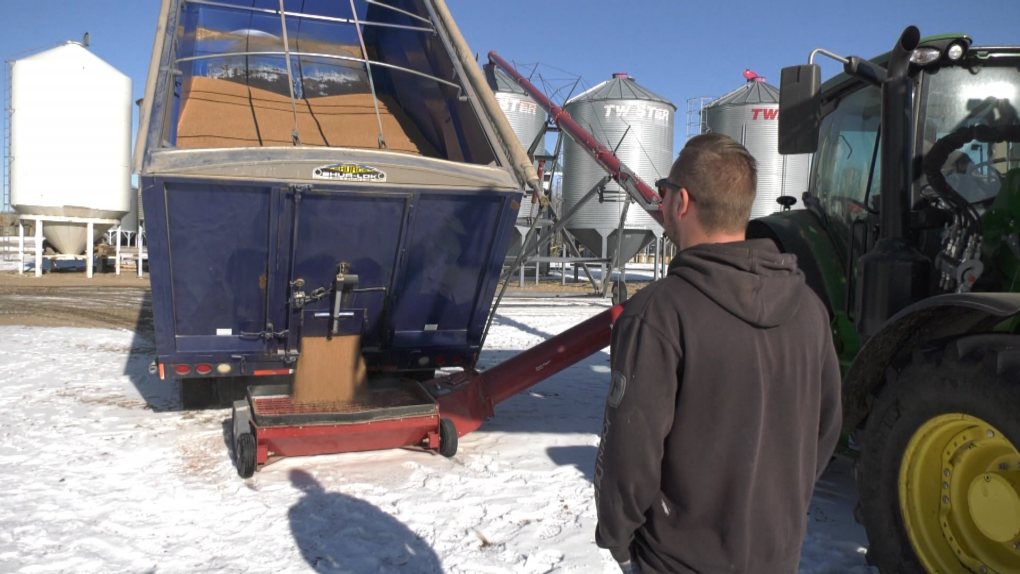Why a dry winter may not mean trouble for Alberta farmers

As drought conditions in Alberta worsen, one local farmer is holding out hope.
Scott Jesperson, an Edmonton area producer and vice chair of Alberta Grains, said the dry winter won’t hurt grain growers – as long as spring brings rain.
“When you look at last year, we went into May with a half an inch of rain the whole month,” Jesperson said. “Then the rains came in June and completely turned the season around.
“You know, crops are really resilient. Our breeding of our crops is just absolutely excellent in this province.”
A February agricultural moisture update from the Alberta government shows most land north of the Yellowhead Highway received below normal moisture since the start of the year, with some regions seeing “once in 50-year lows.”
In response to the worsening conditions, the Alberta government recently began large-scale water sharing agreement efforts and declared an early start to the wildfire season.
Jesperson said that lingering dry doesn’t necessarily mean all farmers are in trouble, because crops don’t rely on melting snow.
With the ground still frozen, snowpack mainly runs off and replenishes fresh water reservoirs.
“Cattle producers would be the most concerned right now with the snowfall amount, just because they need that spring runoff to fill their water dugouts and to fill their reservoirs,” Jesperson said.
The lack of snowpack also means trouble for farmers relying on irrigation, which is heavily relied on in southern parts of the province.
“They are concerned because irrigation relies on snowpack for snow melt,” said Dick Puurveen, a field research agronomist with the University of Alberta. “Even though they can control water application during the growing season, if that water is not available, then they’re equally not able to grow crops.”
Puurveen said many producers are already making plans for how to manage drought conditions if rain doesn’t come in the spring.
For farmers, that could mean sowing a different crop or holding back fertilizer. Ranchers may consider downsizing their herds or finding alternate food sources if forage levels remain low.
Purveen said it’s hard to predict, but some projections are showing a shift in the El Niño around April, which would yield some wetter weather conditions.
If the rain doesn’t come, Puurveen said crop insurance can protect farmers against total crop failures like those seen in the Municipal District of Greenview in 2021.
“At the end of the day, we do not have control over precipitation or the climate. So it’s going to be a flip of a coin,” Puurveen said. “The farmer has to have faith in Mother Nature, and if it comes, it comes.”
For more information on the current drought conditions and mitigation efforts, visit the Government of Alberta’s website here.
With files from CTV News Edmonton’s Marek Tkach
View original article here Source









